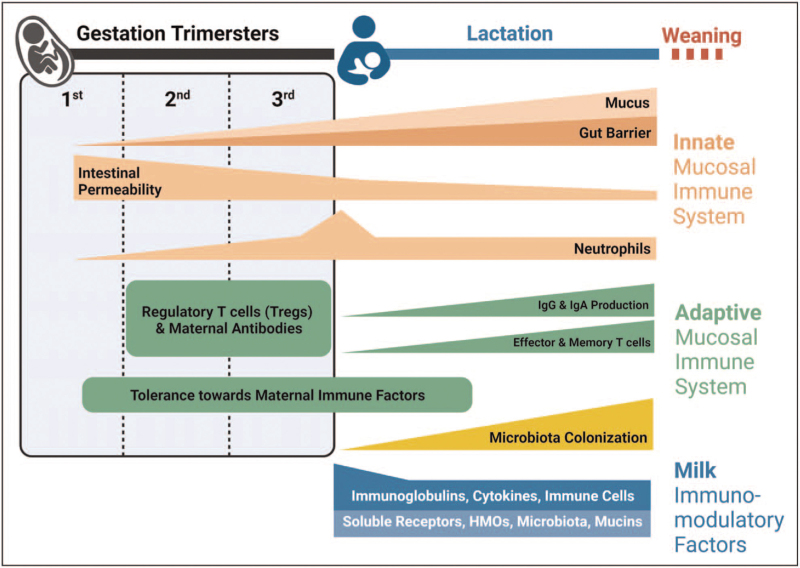FIGURE 1.
Timeline of innate and adaptive mucosal immune development during gestation and infancy and the bridging role of human milk. (Original). Gut barrier development beings in utero and continues until weaning, correlating with a decline in gut permeability and an increased thickness of the mucus layer. Levels of neutrophils increase toward the end of gestation and rapidly decrease to normal levels within the first hours after birth. Levels of Tregs are higher in the fetal period, which leads to immune suppression and tolerance toward maternal immune factors, such as immunoglobulins. After birth, the neonatal immune system gradually switches to an effector immune response with the increased exposure to environmental and milk immune factors, including microbiota. The innate and adaptive immune systems mature after birth, increasing the local production of mucosal antibodies. Milk components, such as microbiota, maternal cells, antibodies, cytokines, growth factors, soluble receptors, and HMOs, play an important role in promoting the normal development of the neonatal mucosal immune system (Figure 1); many are especially abundant in colostrum.

